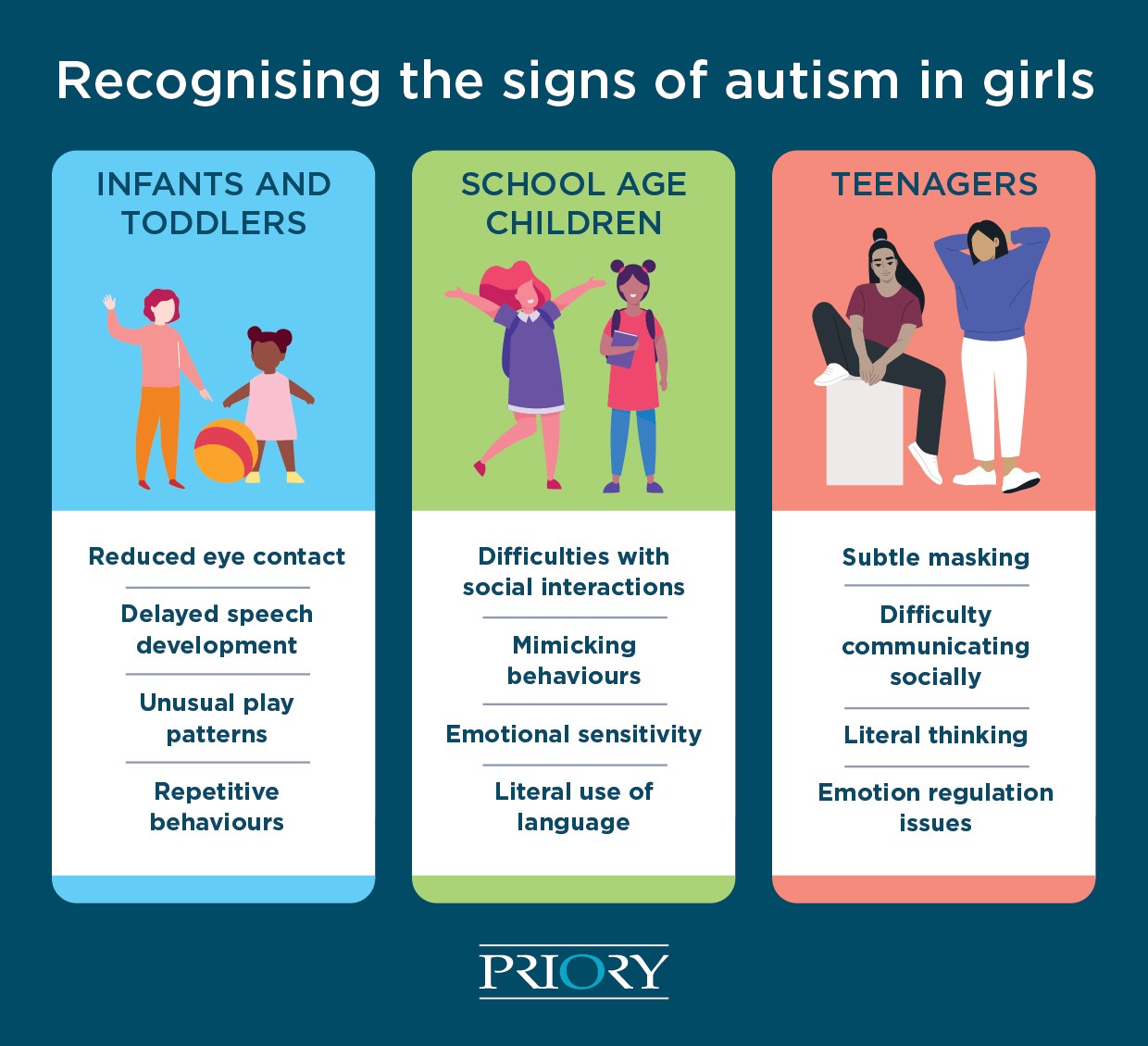Understanding autism in girls: recognising symptoms and challenges across age groups
Outlining symptoms of autism in girls, underdiagnoses, and where to find support.
Autism is often less recognised in girls, leading to a high risk of misdiagnosis or delayed support. While boys are diagnosed with autism much more frequently, girls can display subtler symptoms that differ as they grow. This disparity highlights the importance of understanding the unique signs at every developmental stage, ensuring girls receive the timely support they need to thrive.
This article will guide you through the symptoms of autism in girls, the reasons for underdiagnoses, and where you can find support and resources.
Here, we explore what autistic characteristics look like for girls at different ages, from young childhood through to adolescence.

Boys may show significant delays in speech development, less eye contact, and limited interest in social interactions from a young age. They might also exhibit more obvious repetitive behaviours. These early indicators can be more intense and easier to recognise, often prompting earlier concerns and evaluations compared to their female counterparts.
In school-age boys with autism, behaviours are typically more pronounced and observable compared to girls. Boys may show clear difficulties in social communication, and their repetitive behaviours, are often more evident and less likely to be masked. Boys might also display more disruptive responses to changes in routine or sensory stimuli. Girls may appear to have less social challenges than boys, as they are more likely to mask their traits. This means girls on the autism spectrum are more likely to engage with friendship groups, which can therefore can lead to these differences being missed.
In teenage boys with autism, behaviours often manifest as more overt social communication issues. Boys may exhibit more visible repetitive behaviours and have more intense reactions to changes in routine or disruptions. They might also show less interest in masking their difficulties, making their challenges more apparent compared to girls.
Statistics on autism suggest that 4 in 100 boys have autism, compared to 1 in 100 girls. It was once thought that autism in boys was simply more common when compared to girls, but as our understanding of this condition improves, the gap in diagnosis is closing.
Here is an overview of the some of the challenges of diagnosing girls with autism.
Girls are good at masking their difficulties, mimicking social interactions to blend in. This ability to 'mask' genuine struggles has led to the possibility of autism being overlooked in girls. Unlike boys, whose social difficulties might be more overt, girls may quietly struggle to interpret social cues and engage naturally in social contexts.
Diagnostic tools and criteria for autism have historically been developed based on observations of boys, which may not capture the distinct ways autism manifests in girls. This can lead to girls receiving a diagnosis much later than boys, if at all.
Some signs of autism overlap with other conditions such as anxiety, depression, or attention deficit hyperactivity disorder (ADHD). Historically, this has led to traits being mistakenly attributed to other conditions, leading to strategies that don’t address the underlying issues.
With correct diagnosis and additional support for autism, girls can reap significant benefits to their education and social life.
Here are some steps to take if you think your daughter may have autism and needs support.
If you suspect that a girl may be displaying signs of autism, make a note of some of their behaviours and symptoms and check them against the characteristics discussed in this article. You could also go to your GP. They won’t diagnose autism themselves but can provide some initial guidance and support.
You could also take an online autism test with your daughter. While this tool doesn’t provide an official diagnosis, it can indicate whether a more formal evaluation might be necessary. There are different options depending on how old your daughter is.
A private autism assessment can help bring clarity to your daughter’s traits and could be the first step to getting the tailored support she needs. Autism assessments involve professionals carrying out a detailed evaluation of your daughter’s behaviours and traits.
To asses for autism, specialists use a diagnostic tool like the Autism Diagnostic Observation Schedule (ADOS). Clinicians use these tools to observe and interact with your child in ways that bring out behaviours that are typical of autism. Behaviours could be specific ways of playing, interacting and communicating, and the ADOS helps to identify them clearly and objectively. Autism diagnostic tools are constantly being improved for accuracy, making them more effective at identifying autism in girls.
Priory is a leading provider of detailed and personalised private autism assessments for girls. Our experienced professionals are available across the UK to provide you with the support and clarity you need.